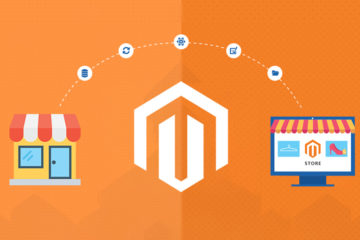Personal associations are the essence of every positive customer experience. Companies are recognizing that online…
You enter a brick-and-mortar store, and you find yourself having trouble finding what exactly you have come for. Then a retail associate walks over to help you, guiding you to the location of the products of your interest. You thank them for their guidance, browse the section, purchase the items, and leave. Easy!
But how can various eCommerce brands drive online shoppers through the buyer’s journey and guide them along the route to purchase? In this blog, we’re delving into a few great strategies to help you build a positive eCommerce customer experience.
eCommerce Customer Experience: Tips & Strategies
Online communications between customers and businesses are just as essential as face to face touch-points. Establish and develop relationships with your consumers and increase customer satisfaction by executing the following tips:
- Display a unique value proposition
- Engage with your social media followers
- Personalize your content strategy
- Have clean product pages
- Make it effortless to find products
Display A Unique Value Proposition
Having a unique value proposition (UVP) displayed on the home page of every business with a website is a must. A strong UVP effortlessly delivers your offer to your visitors, so they understand how they can gain by purchasing from you.
Effective UVPs add to the reduced bounce rates and help consumers realize the value of your brand. To deliver your UVP most effectively, we recommend brands to determine first:
- What exactly your brand has to offer to its customers
- The voice of your brand
Identify your offer to have a clear understanding of how your products or services serve the end-user. Then, build the voice of your brand to discover how you will deliver your UVP on your home page.
Engage with Social Media Followers
Build a positive eCommerce customer experience and grow the trust of your customer with an engaging and sturdy social media branding strategy. Social media engagement builds a sense of community and excites users for future content, along with helping brands receive positive and negative feedback on multiple aspects of your business.
We highly suggest answering back to all comments (both positive and negative) to show consumers that you are listening to them, you care about them, and want to improve for them. Make sure to give a like and share any user-generated content (UGC) to continue building the trust, showing the prospects and leads that your consumers are happy with their purchases.
Personalize Your Content Strategy
Personalize your content strategy according to each unique user to improve customer affinity for your brand.
We recommend eCommerce stores to take a step further to target individual customers based upon the way they’ve associated with your website. Remind shoppers that they’ve left items behind by making an abandoned cart workflow using HubSpot to help reduce the rate of the abandoned cart. Or, offer related product recommendations via banners ads or pop-ups.
A personalized content marketing strategy accompanies with numerous benefits. Enhance the eCommerce customer experience, boost engagement, and drive added conversions by nurturing shoppers through the buyer’s journey with personalization techniques.
Have Clean Product Pages
The product page of an eCommerce website is one of the most significant pages throughout a website as it’s where customers view products in detail and decide whether to add or not to their carts. Display your products from different angles to build consumer trust with detailed product photography.
Limit the text on product pages − particularly on mobile devices − to cover the most necessary information only, such as the name of your product, its cost, etc. If you want to display additional information, you can do that by using a collapsible design to show other (not as) essential elements such as sizing guide, product reviews, etc.
Make It Simple to Find Products
Spending time in marketing your website and driving traffic is worthless if customers fail to navigate easily through it. Enhance the eCommerce customer experience and usefulness of your website by applying filters, categories, and internal website search to find products more effortlessly.
Add categories in the navigation to lead users to the most relevant pages. In case you’re an eCommerce retailer, then grant users the option to filter by cost, special offers (such as free shipping), size, brand, color, and more.
Finally, return with relevant search results when users search for products within your website. Advertise special offers and advertisements by displaying banners in the website search box to assist customers in finding the products they’re browsing for (and potential discounts).
Summing-up
Building unique and memorable eCommerce customer experiences is code to improving brand favorability, and driving added online sales. We hope tips help you to see more satisfied and happy customers!
Want to know how Axtrics can help your eCommerce store enhance the customer experience? Just reach us through the comment section given below, and we will get back to you soon!














Leave a Reply